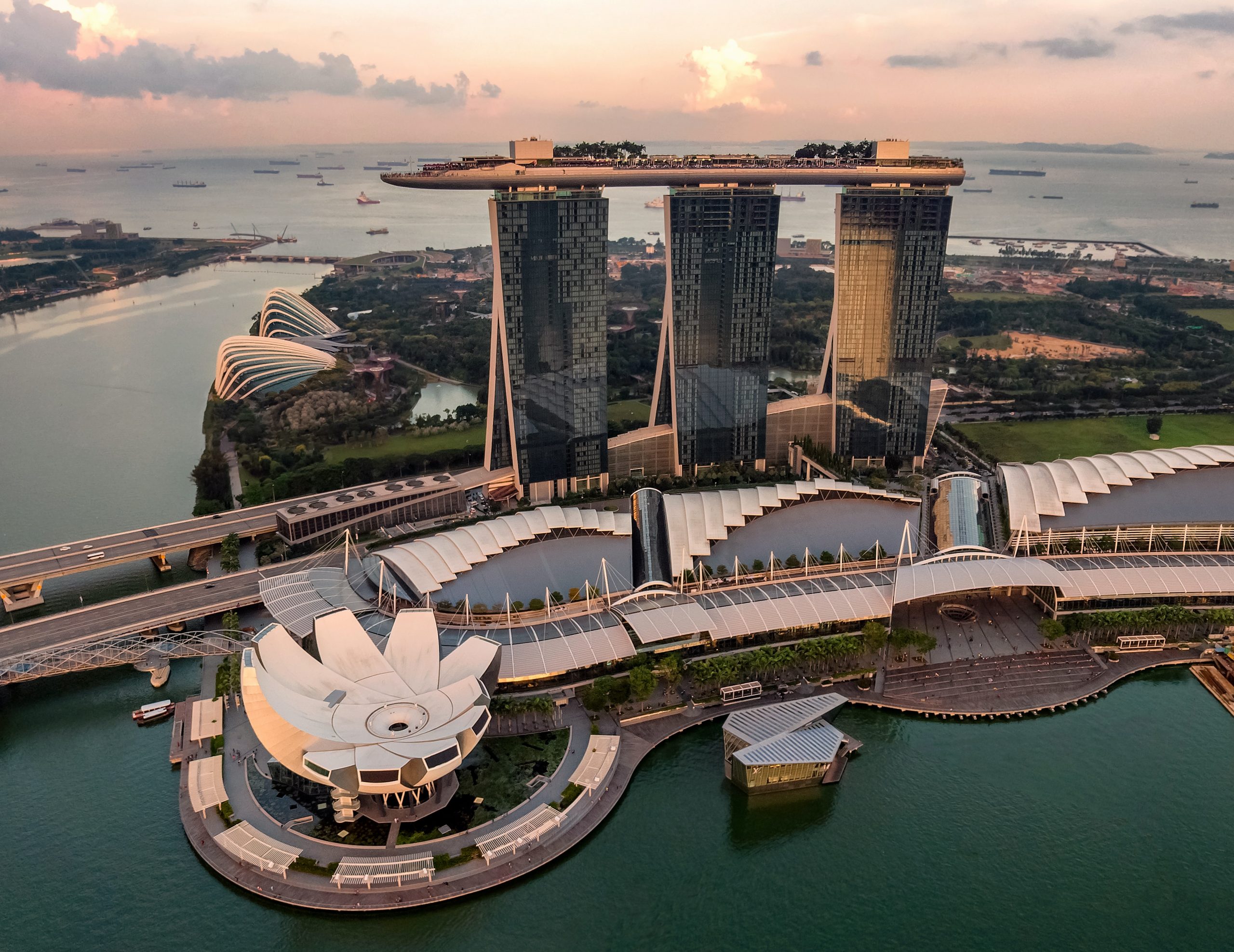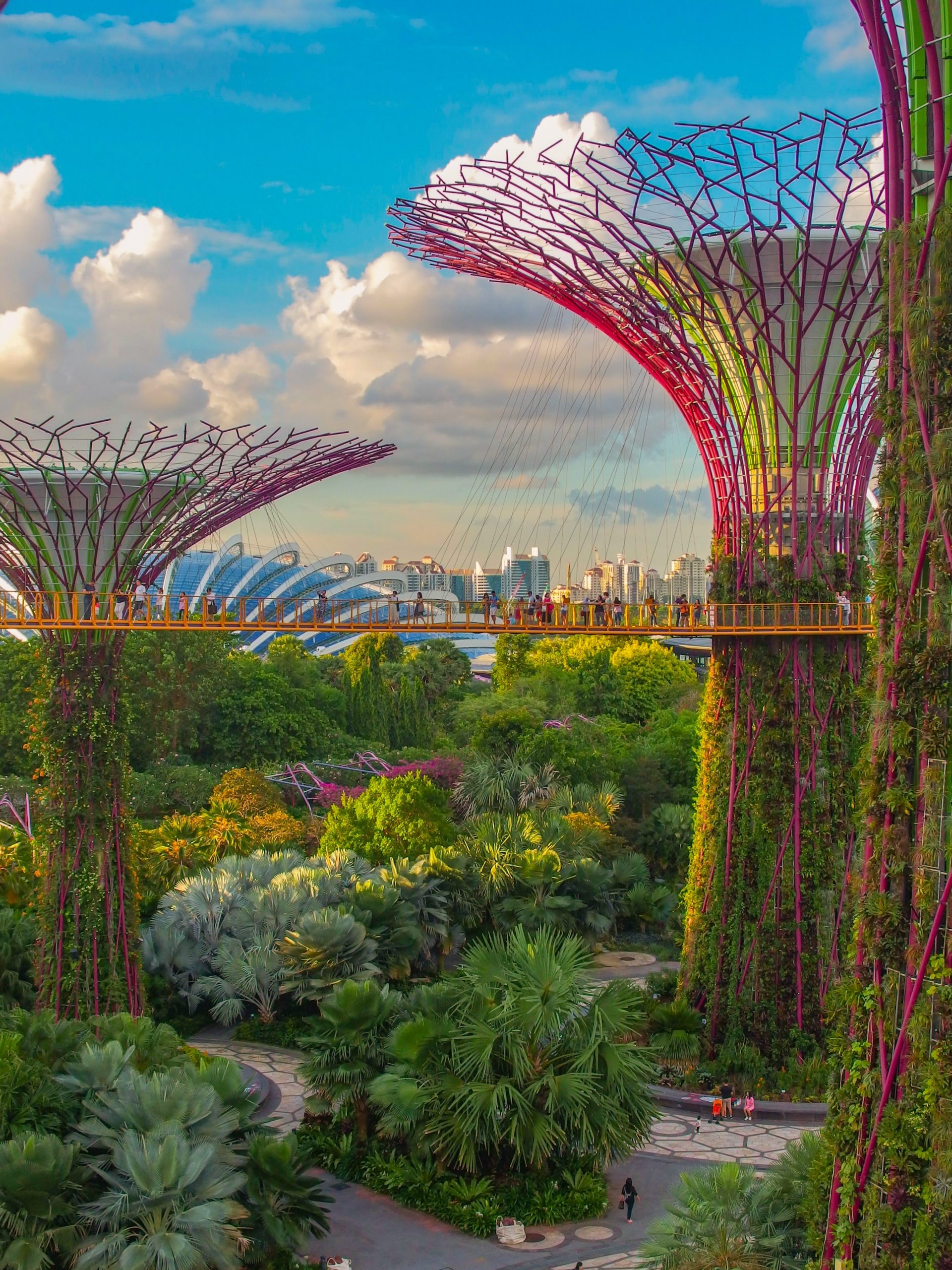45 SE Asia: Urban Geography I – Entrepôt ~ Singapore
Entrepôt
As seen in trading cities formerly in the British Empire
SE Asia - Singapore
A concept of Urban Geography is the entrepôt, also an economic term. In a series of chapters, we are looking at four examples of entrepôt cities that also were pieces of the British Empire. Thus, the sub-title of our chapter is Asian trading cities formerly in the British Empire. Although we highlight British colonial cities in these chapters, the word entrepôt is French for warehouse.

Photo by Hu Chen on Unsplash.
An entrepôt is a point of transshipment. That is, this type of city is located advantageously where export and import take place; however, not only in terms of products arriving and products departing, but importantly as the location where imports are sorted and repackaged for export. It is very likely that an entrepôt is an ocean seaport, though it is possible that a point of transshipment could be an intersection of highways, railroads, airports, and/or rivers. Roads, railroads, and airports are modern transportation hubs, whereas an entrepôt often has a lengthy history of trade, being founded as a settlement long ago. This preceding historical advantage favors the ancient seafaring trade; thus, again we note that seaports have an advantage in becoming entrepôts. Here we will compare and contrast entrepôts in four of our regions of the Eastern World. In this case we consider the success story of Singapore.
| British Name | Other Names | Name means | Settled | British Takeover | Sovereignty | Population (in millions) |
|---|---|---|---|---|---|---|
| Hong Kong | was Hongkong | fragrant harbor | Stone Age | 1841 | 1997 | 5.7 |
| Singapore | lion city | 1000+ years ago | 1824 | 1965 | 7.3 | |
| Kollam, India | was Quilon | pepper | 2000+ years ago | 1795 | 1941 | 0.4 |
| Aden, Yemen | ancient | 1839 | 1967 | 0.86 |
Singapore
The city-state of Singapore is one of the world’s greatest economic success stories. A city and a country at the same time, Singapore packs over twenty thousand people per square mile of territory. This tiny island country sits across a thin stretch of water from the tip of the Malay Peninsula. Its location is ideal, positioned at the southeast corner of continental Asia. Its southern edges along the Strait of Malacca and the eponymous Singapore Strait, this city-state is located at the corner of the shortest sea passage between any Asian countries having ports on the Pacific Ocean and any Asian countries having ports of the Indian Ocean.
Although the city is at least 1000 years old, the Kingdom of Singapura was founded in 1299. It was a useful trading post for over 300 years, before Portuguese explorers burned it down in 1613. Oddly, little happened on the island until in 1819 British governor Samuel Raffles acquired the rights to build a trading post there. Raffles established an open immigration policy that brought Chinese migration to the settlement, beginning what would become a Chinese majority population in the city. In 1867 Singapore became part of the British Straits Settlements and an official crown colony.
In 1869, the Suez Canal opened, offering European ships a shortcut to the Indian Ocean. Ships from England now had a much shorter route to the Indian Ocean and even to China. Singapore’s corner location became even more strategically useful.
In 1963, Singapore separated from British rule to join the newly independent Federation of Malaysia; however, dissatisfied after only two years, Singapore took independence on its own, apart from Malaysia. In the decades after independence, Singapore’s development as an entrepôt and a financial center expanded considerably, so that the city became known as one of Asia’s economic tigers.

By itself as a tiny area, Singapore has no natural resources to offer to the world. It has not agricultural land. Instead, it is an ideal entrepôt – a city-state devoted to commerce, value-added production, transshipment, and financial services. Although it sits astride the Strait of Malacca that is famed for piracy, Singapore has a crystal-clear reputation. From country to business owner, shipper to investor, everyone knows that Singapore ranks near the top of the world in multiple measures of wealth, freedom, capitalism, and liberty. Singapore’s tightly held society forces crime and corruption rates to very low levels. Dependable, safe, profitable, and perfectly located, the city-state is an ideal entrepôt and one of the world’s busiest seaports.
Did you know?
Check Your Understanding
My Turn!
CITED AND ADDITIONAL BIBLIOGRAPHY:
Chen, Hu. Marina Bay Sands - Singapore. 6 May 2018, https://unsplash.com/photos/__cBlRzLSTg.
hangga, jonata. “Sea Logistic Icon - 4805740.” The Noun Project, https://thenounproject.com/icon/sea-logistic-4805740/.
History of Singapore, One World Nations Online, 2021, https://www.nationsonline.org/oneworld/History/Singapore-history.htm.
Rivas, Coleen. Super Tree Grove at Gardens by the Bay - Singapore. 25 Oct. 2017, https://unsplash.com/photos/OZ2rS2zCjNo.


